Deliciously crispy vegan samosas filled with fluffy aloo (potatoes) and matar (green peas) are the perfect golden snacks to dip in sauces or to accompany your chai.
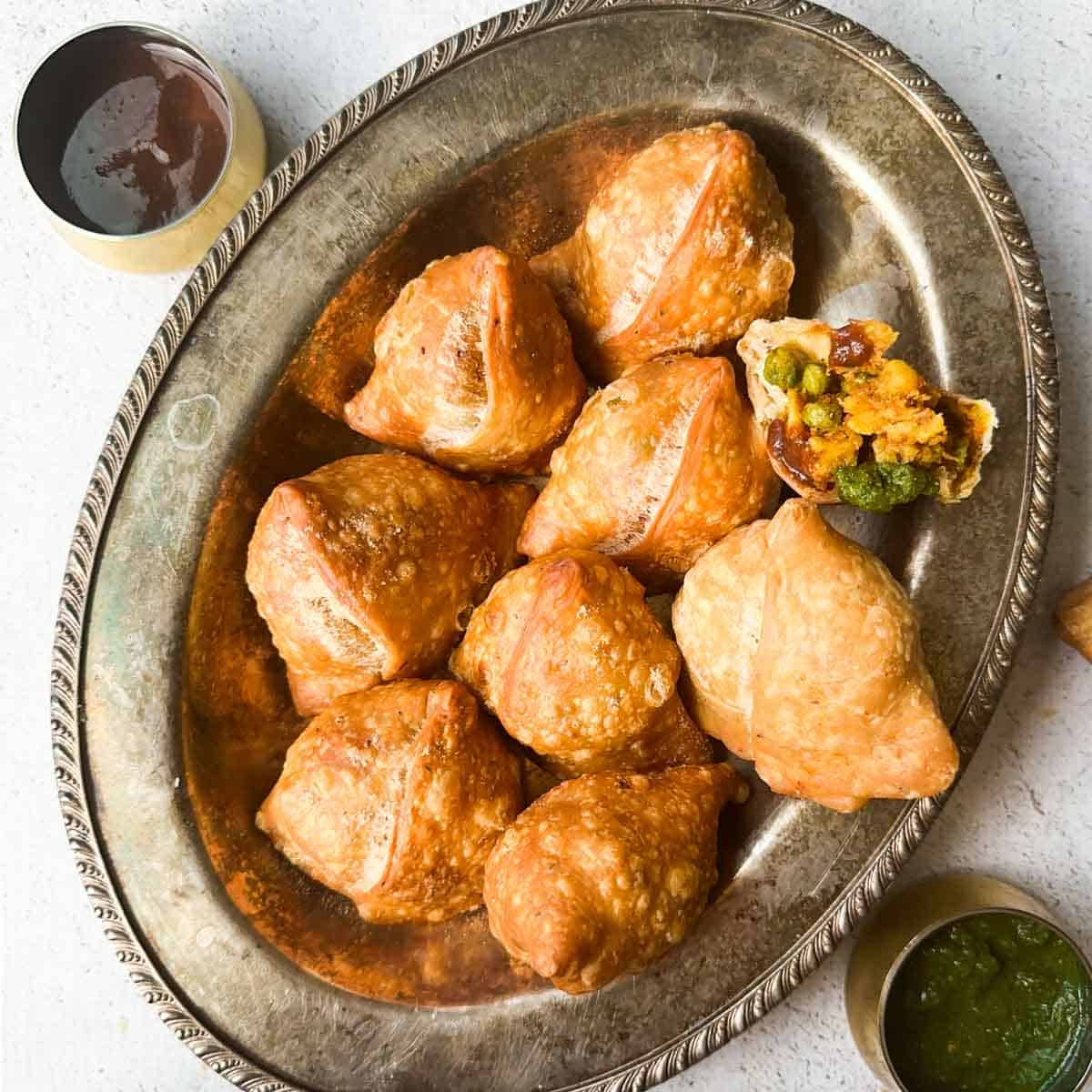
What are samosas?
Samosas are one of India's famous street food snacks. They are crispy golden triangular pastries that can be stuffed with almost anything. The most famous type of samosa in the United States is the Punjabi style samosa. This style of samosa is filled with aloo matar or potato and peas which is naturally vegan.
Shortcrust method for making samosa dough
The key to great samosas relies on a technique called the shortcrust method. This technique involves on working fat into the flour until the flour is coated in the fat. The shortcrust method is often used in American pastries to make desserts like pie. In pie, the pieces of butter create flaky layers. This is as a result of the large pockets of fat melting and releasing steam.
For samosas, vegetable oil is streamed and rubbed into the flour creating a sandy texture. This step creates tiny pockets of fat in the dough that turn into crispy bubbles on the surface of the samosas. Working the oil into the flour also inhibits gluten formation in the dough. Th allows the samosa dough to be easily rolled and more tender when eaten.
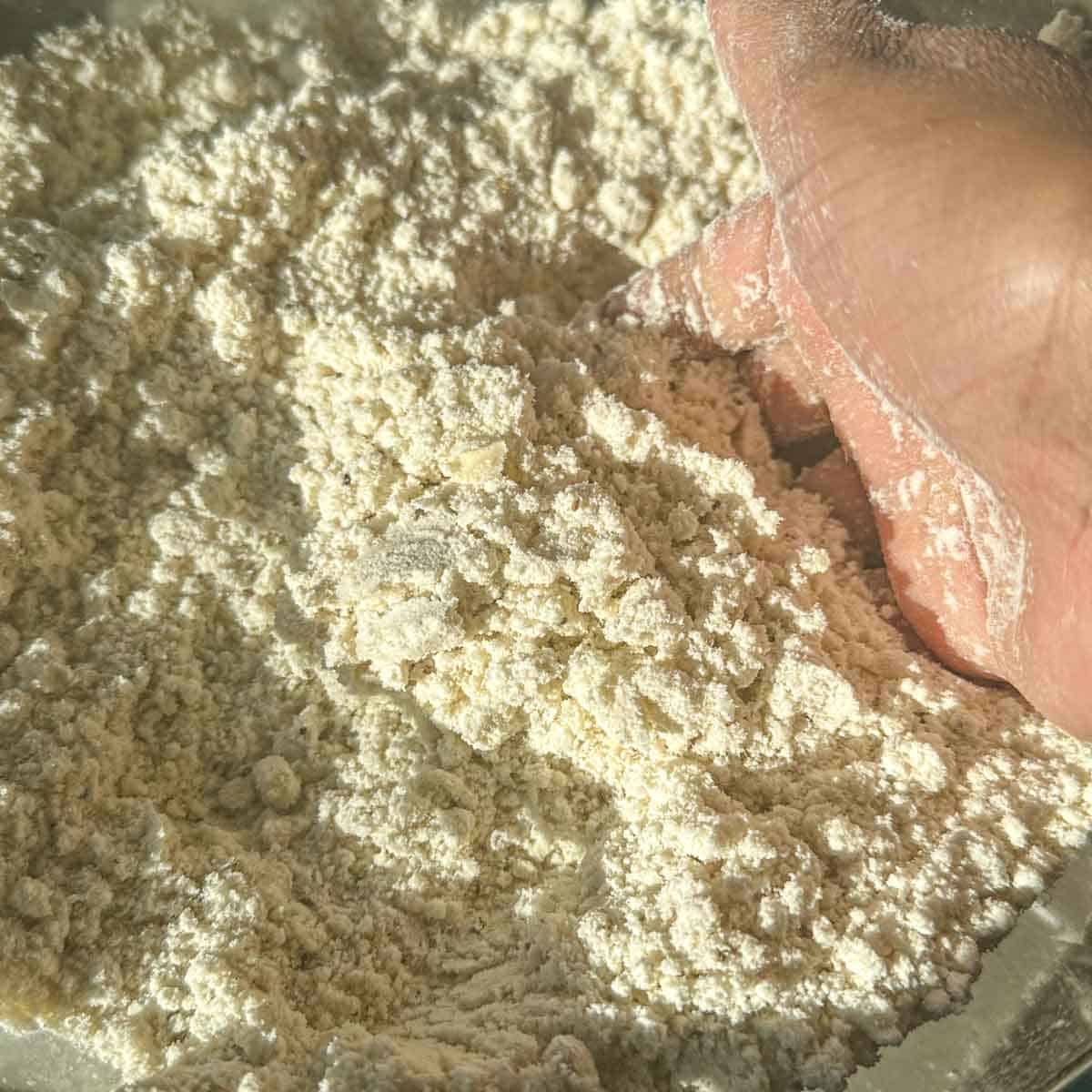
Tips for getting a crispy samosa
The enemy of any crispy food is water. Here are tips to decrease the amount of water in samosas.
- Don't add too much water to the dough. The samosa dough is supposed to be a stiff dough. The visual indicators you should look for is a tight dough that doesn't have dry flour patches remaining. Don't worry, the recipe below includes exact measurements for the water to add. However, even with those measurements it is important to understand that each brand of flour absorbs water differently. So make sure to always rely on your visual indicators.
- Minimize the liquid in the samosa filling. For aloo matar samosas this means that you should thaw the peas before using it in the filling. In addition you can place a paper napkin to absorb excess moisture from the boiled potatoes.
- Cool the filling before stuffing. If you are cooking a filling, it is important to allow the filling to completely cool. For this recipe, the boiled potatoes should be at room temperature otherwise it will create condensation inside the samosa.
- Use shortcrust method while making samosa pastry. This method ensures tiny crunchy surface bubbles as well as reduce the amount of water the flour absorbs.
- Fry samosas low and slow. Fry the samosas on low heat at 325F for 8-10 minutes to fully allow the samosa dough to cook through. This slow cooking time helps the samosa loose its moisture it may have. Trying to take the shortcut and frying quickly will result in the uncooked dough on the inside of the samosa. If the samosas don't achieve a golden color by ~8 minutes, then the temperature can be turned up to 350F to get a beautiful golden exterior.
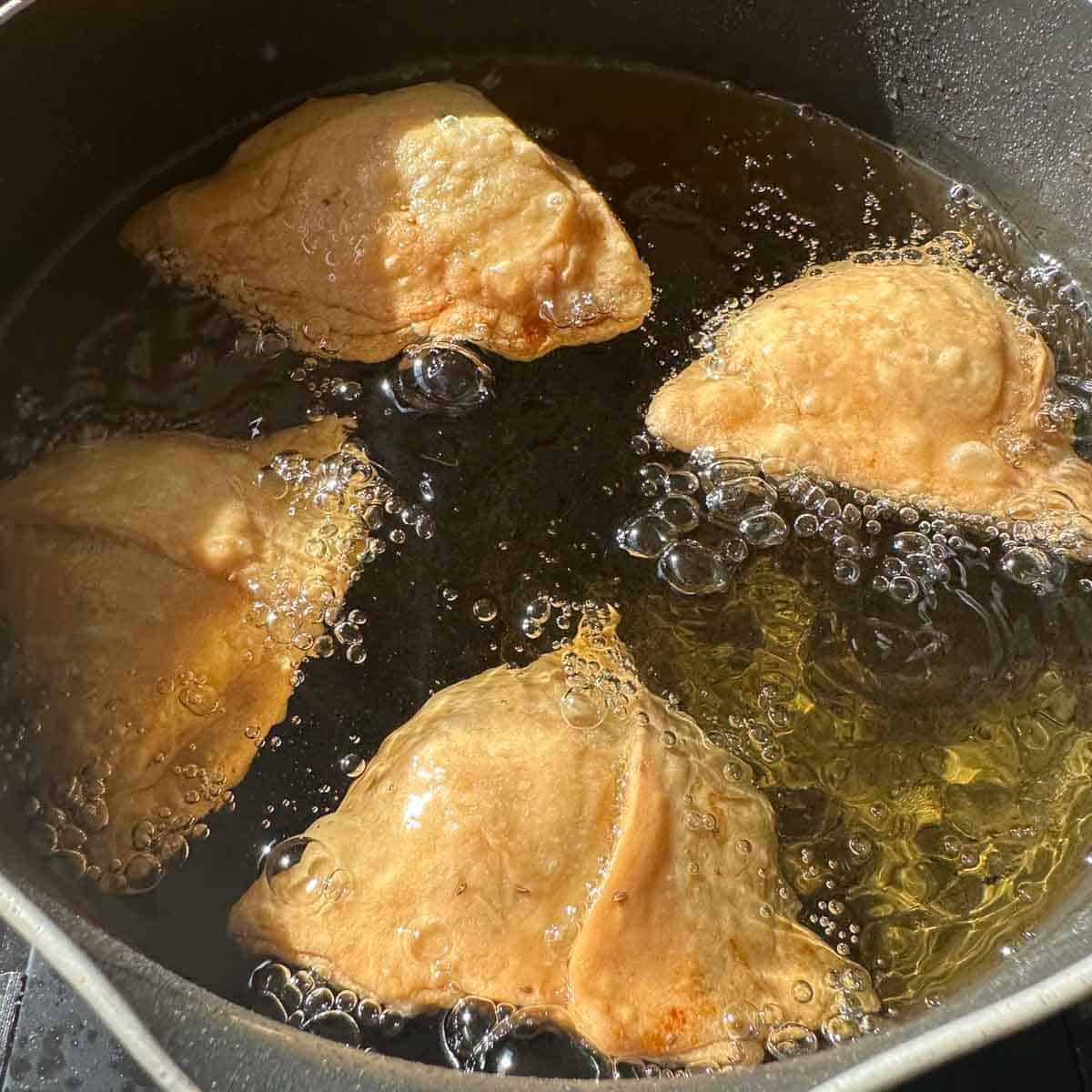
How to ensure samosa and filling stays intact while frying?
One of the biggest issues beginners have with making samosas is folding them so they are secure. I've taught many samosa making classes where samosas explode in the fryer because they weren't folded properly. So here are my tips so this doesn't happen to you.
- Less is more! Remember that less filling is often better if you are not confident in your folding techniques. Over stuffing your samosas can make them really hard to close. The samosas also expand in the fryer the seam can come undone. So repeat after me, "less is more".
- Overlap the seams. It is helpful to overlap the edges of the samosa as you fold them. Overlapping them ensures that there aren't any holes where oil can come in contact with the filling.
- Use pressure to seal edges. One mistake beginners make when making samosas is they don't apply enough pressure to seal the seams together. Use a pinching motion with your index finger and thumb to helps get a tight seal.
- Use water to help create a tight seal. Dip your index finger in water and run it along the edges of the dough. This helps the dough stick to itself and creates a tight seal.
Samosa without frying
This vegan aloo matar samosa can be baked in an oven or in an air fryer at 350F for ~30-35 minutes. Note that there will be a considerable difference in how the samosas look and taste when fried vs. baked. The main difference is that the baked samosas don't have as light an airy crust as they don't form the exterior air bubbles that fried samosas have. In addition, baked samosas can often be unevenly browned due to the lack of oil. However, this can be mitigated by spraying oil on the samosas during the baking process. Here is a photo to illustrate the side by side of the samosas fried vs. baked.

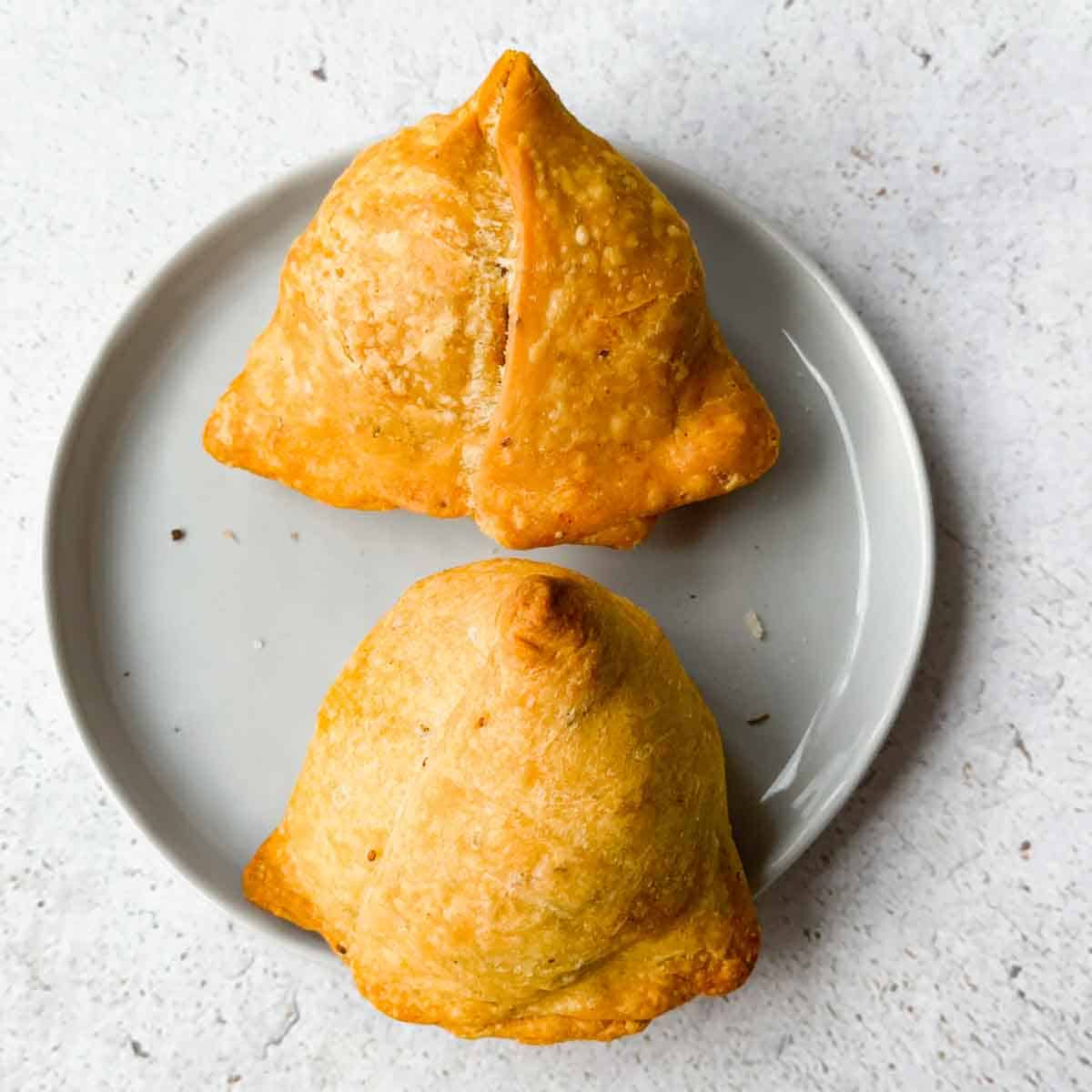
My favorite way to enjoy samosas without frying is to make my recipe for oven baked samosa pot pie. This recipe uses a pie dough crust that becomes super flaky in the oven. This recipe uses an all butter pie dough that contains ajwain/carom seeds. However, the dough can easily be swapped with store bought vegan puff pastry which you can roll ajwain seeds onto. In addition, the pie is great for family gatherings or potlucks as a statement dish!
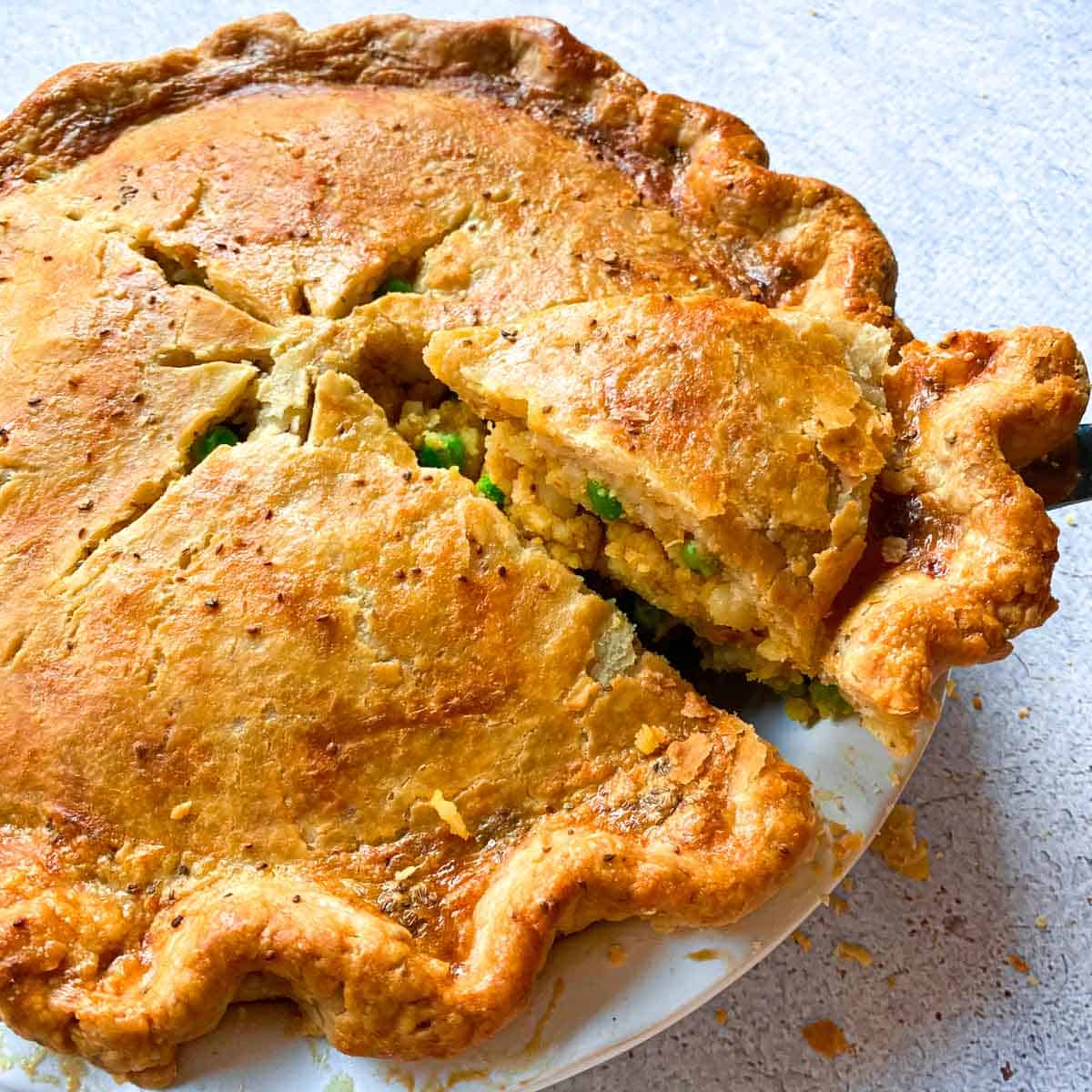
Freezing and reheating samosas
I love making a large batch of samosas and saving them as future snacks or party appetizers. You can either freeze the samosas before frying or freeze them when un-fried. Both of these methods work great! It is best to freeze the samosas in a single layer on a sheet tray until frozen solid before compacting them into a smaller container to ensure they don't stick together.
The best way to reheat cooked samosas are in the oven or air fryer at 325F for 5-6 minutes to allow for the exterior dough to crisp back up and also give enough time for the samosas to warm through on the inside. This time range will increase if the samosas were frozen. You can also use a microwave but the steam that this creates often makes the exterior soft.
What to eat samosas with
Sauces that Pair Perfectly With Samosas
Good dipping sauces are key when it comes to eating samosas. I personally love the classics which are spicy cilantro-mint chutney or a sweet and tangy tamarind sauce. Checkout the blog posts for each of these chutneys to find the recipes to make at home as well as recommendations on where to purchase them. Another two store-bought sauces that you should checkout are Maggi Hot and Sweet Sauce as well as Brooklyn Delhi's Spicy Mango Chutney which make great saucy, sweet, and spicy additions.
Samosas and Chai
Samoas are the perfect afternoon snack and especially tasty to have to accompany your afternoon chai. I especially love a masala chai or Indian spiced tea which pairs perfectly with the samosas. Better yet, throw an Indian chai party with samosas and many other desi treats!
Frequently Asked Questions
Make samosa pastry by using the shortcrust method. This involves rubbing a fat into flour before adding water to create a stiff dough. Ajwain or carom seeds are what gives the pastry a nutty depth of flavor. You can checkout the full recipe below.
Roll an oval with a dou Using a bit of water to help seal the samosas is useful when it comes to folding samosas.
You can fill a samosa with almost anything. The key is to cook and cool the filling before putting it in the samosa. It is also important to have a filling that has minimal water or moisture to allow for a crispy samoas.
It depends on what the filling is. Most samosas doughs are naturally vegan however the filling is usually what determines if the samosa is vegan. Generally potato and peas samosas which are the most popular variety in the United States are vegan.
A sweet and sour tamarind date chutney or a spicy herbaceous cilantro and mint chutney are the two classic dipping sauces for samosas. Maggi hot and sweet chutney as well as Brooklyn Delhi's Spicy Mango Chutney are also great accompaniments.
Chai and samosas are a match made in heaven. In addition, samosas are a great addition to an Indian chai party. You can checkout ideas on how to create recipes to host one here.
Yes, you can bake or air fry samosas in the oven at 350 Fahrenheit for ~30 minutes. Make sure to check on them at the half way point. Another alternative is to make my oven baked samosa pot pie recipe which leads to a flaky and crispy crust without needing to fry samosas.
It is important to limit the amount of water in the dough and filling. In addition, you should fry the samosas on low heat for a long time to rid the samosa of the excess moisture. Lastly, using the shortcrust method leads to exterior bubbles on the samosa skin which yields in a crispier samosa.
It is important not to overstuff the samosas so you can properly seal the samosa shut. It helps to overlap the samosa dough slightly to ensure that the edges remains shut. In addition, using a slight amount of water helps ensure a secure seal.
Yes! You can freeze samosas once they are folded. You can be freeze them before or after being fried. Make sure to tightly wrap and freeze them in a single layer before compacting them into a smaller container to ensure that they don't stick.
Samosas can last in the freezer for upwards of 6 months. Samosas in the fridge last between 3-5 days.
You can easily find ajwain seeds at American grocery stores as carom seeds. Alternatively, you can buy them online or at your local Indian store.
You can substitute cumin seeds in place of ajwain seeds.
The best way to reheat cooked samosas are in the oven or air fryer at 325F for 5-6 minutes to allow for the exterior dough to crisp back up and also give enough time for the samosas to warm through on the inside. This timing will be greater if the samosas were frozen.
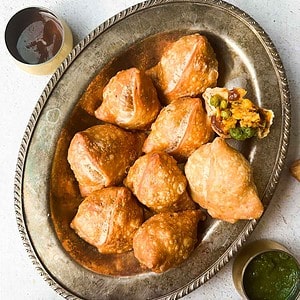
Vegan Aloo Matar Samosas (Potato and Peas)
Ingredients
Filling Ingredients
- 2 cups (425 g) russet potatoes boiled, skin removed, and crushed into small pieces
- ½ cup green peas thawed if frozen
- 1-2 Thai chilis finely chopped
- 1 ½ teaspoons chaat masala plus more to sprinkle on samosas
- ½ teaspoon cumin powder
- ½ teaspoon coriander powder
- ½ teaspoon Kashmiri chili powder
- ½ teaspoon sugar
- ⅛ teaspoon turmeric powder
- ¾ teaspoon sea salt plus more to taste
Dough
- 3 cups all-purpose flour
- ¾ teaspoon sea salt
- 1 teaspoon ajwain carom seeds
- ⅓ cup neutral oil plus ~4 - 6 cups for deep frying
- ¾ cup water plus more if needed
Instructions
Prep Ingredients
- Boil 2 cups (425 g) russet potatoes until fork tender. Peel the skin off the potatoes and discard. Crush potatoes into small pieces.
- Thaw ½ cup green peas
- Chop 1-2 Thai chilis
Make filling
- Mix the potatoes, peas, 1 ½ teaspoons chaat masala, ½ teaspoon cumin powder, ½ teaspoon coriander powder, ½ teaspoon Kashmiri chili powder, ½ teaspoon sugar, ⅛ teaspoon turmeric powder, 1-2 Thai chilis, and ¾ teaspoon sea salt together until potatoes are well-coated in spices.
- Taste for salt and adjust if needed.
Make dough
- Mix 3 cups all-purpose flour, ¾ teaspoon sea salt, and 1 teaspoon ajwain in a large bowl. Add ⅓ cup neutral oil to the mixture and take time to rub the oil into the flour until a coarse flour forms.
- Add half of the ¾ cup water to the dry ingredients and use a dough hook motion with your hands to disperse the water. Add the remaining water to the part of the bowl with dry flour. Lightly knead the dough for 1-2 minutes to form a ball. Add an additional 1 tablespoon of water if there is un-hydrated flour remaining in the bowl. The dough won’t be smooth but should not have dry flour on the exterior.
Fold and Fry
- Cover with a damp towel and allow the dough to rest for at least 30 minutes so it can relax.
- Once rested, divide the dough into 8 equal balls of about 90 grams each. Working with one ball at a time leaving the remaining covered to prevent drying.
- On a clean working space without any flour flatten the dough ball with the palm of you hand to create a flat circle. Doing this step helps spread the dough out evenly and helps form a circle easily.
- Using a rolling pin, roll each piece into a wide oval shape that is approximately 6 inches by 5 inches and ¼ inch thick.
- Cut each oval in half widthwise to create two semi circles. Take one semi-circle and place the other aside.
- Take the wider side of the semi circle or side that was cut further away from you keeping the circular side closer to you. Bring the upper left corner and the upper right corner to the center of the semicircle so the two sides slightly overlap. Place your thumb under the seal to make sure it doesn't stick to the bottom of the dough and instead forms a cone. Gently seal the two ends using a pinching motion with your fingers.
- Create a "C" shape with your left hand which will be the resting spot for the samosa cone. Hold the cone open towards the top top to create a large pocket on the bottom.
- Add 2 tablespoons of filling to the cone of the samosa.
- Lightly tug and stretch the side of the samosa dough that is opposite to the seal side.
- Create a pleat by folding the dough it onto itself. This pleat helps the samosa stand up right.
- Lightly dampen your finger with water and run it across the circular perimeter on top of the samosa cone. Bring the pleat side to the seal side and pinch to enclose all the stuffing in the center and create a small skirt where the two sides are sealed. The skirt of the samosa should flare out towards the initial seal of the samosa.
- Heat a deep, heavy bottomed pot with at least 3 inches of oil to 325F. Do not allow the oil to become too hot, as samosas require a lower temperature to cook thoroughly and become crisp. Fry for 10-12 minutes or until the samosas are a light golden color, then place them on a wire rack. If the samosas take on color before that time period, it is an indicator that the oil is too hot. If the samosas aren't golden after ~10 minutes, increase the temperature to 350F to get the desired golden color. Move samosas to a wired rack or a paper towel lined plate to cool.Sprinkle a pinch of chaat masala on top of the samosas while still warm.
- Serve warm with spicy cilantro chutney or sweet tamarind chutney
Notes and Tips
- Samosas can be baked on a parchment line tray in the oven at 350F for ~15 minutes.
- Samosas can be made and refrigerated 1-2 days ahead.
- You can freeze samosas once they are folded. They can last 6+ months when frozen. You can be freeze them before or after being fried. Make sure to tightly wrap and freeze them in a single layer before compacting them into a smaller container to ensure that they don't stick
- The best way to reheat cooked samosas are in the oven or air fryer at 325F for 5-6 minutes to allow for the exterior dough to crisp back up and also give enough time for the samosas to warm through on the inside. This timing will be greater if the samosas were frozen.
- Ajwain also known as carom seeds can be found in most American grocery stores, Indian grocery stores, as well as online. A good substitute are cumin seeds.


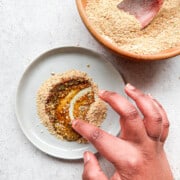
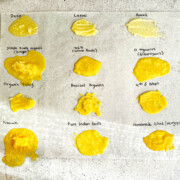
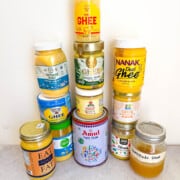
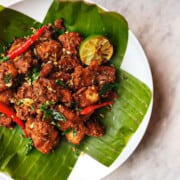

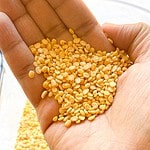
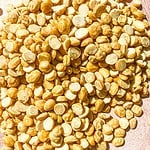
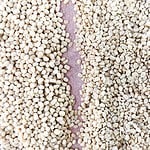
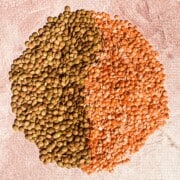

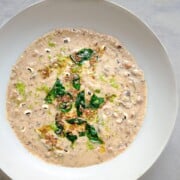

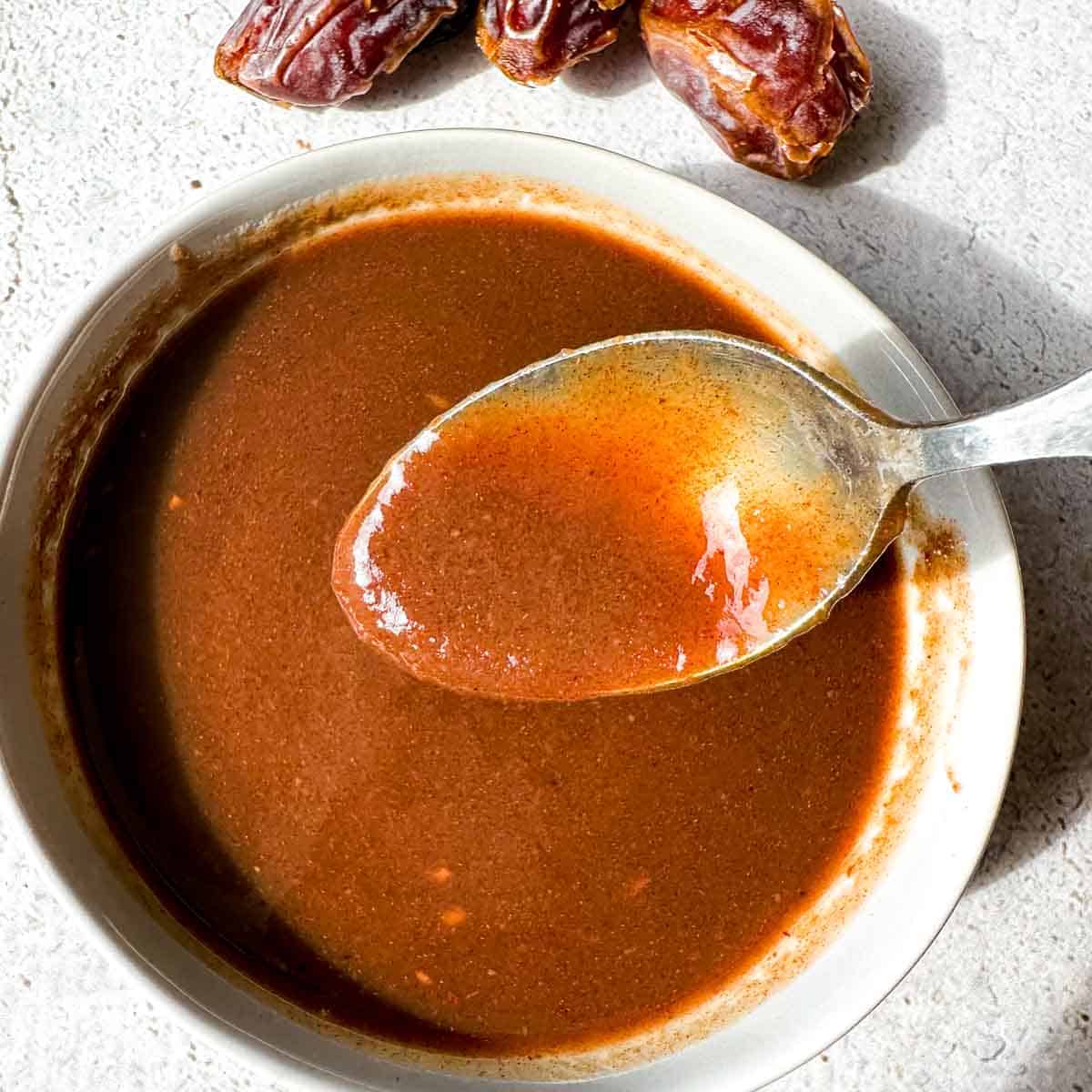
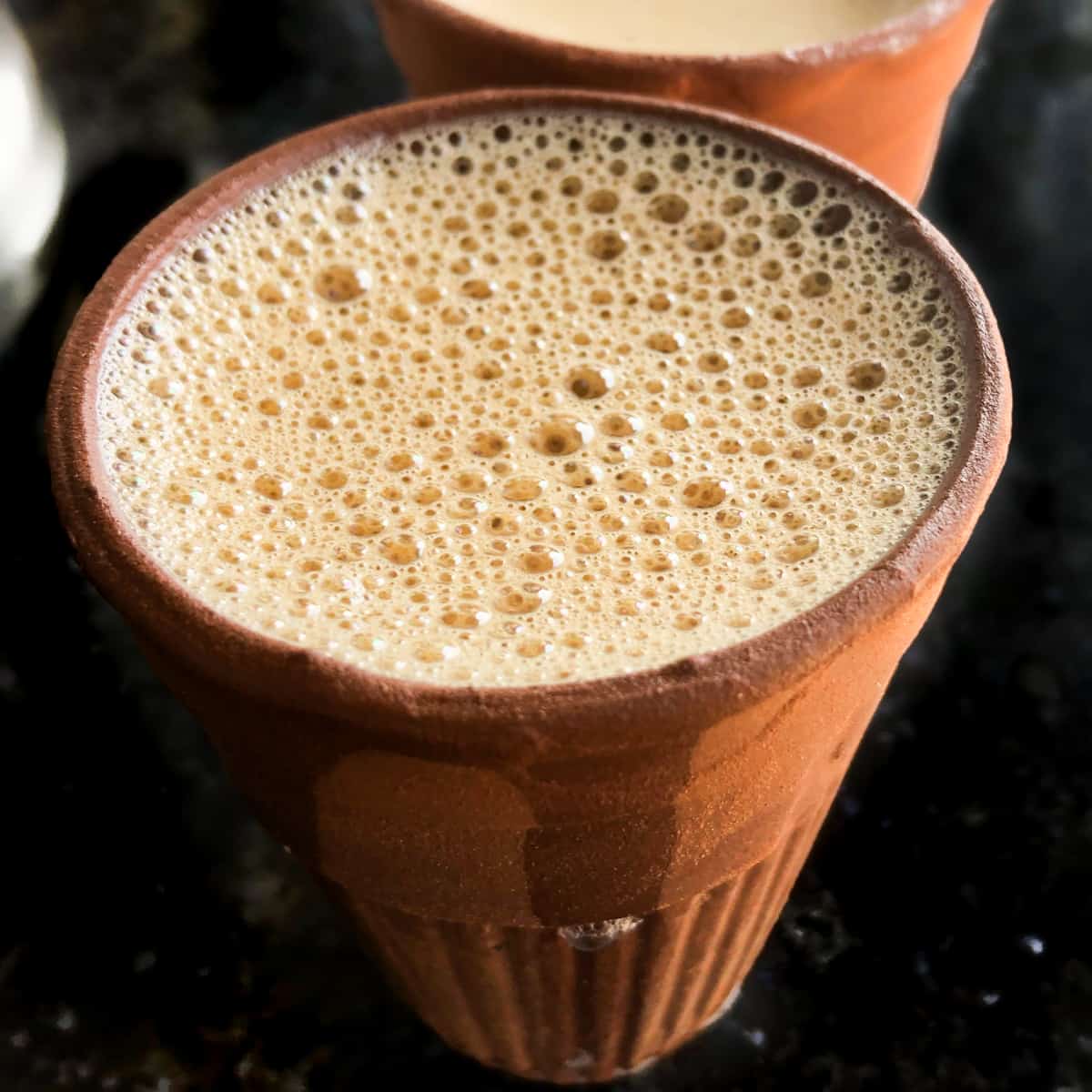
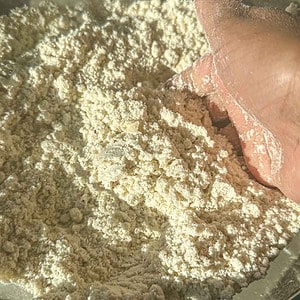
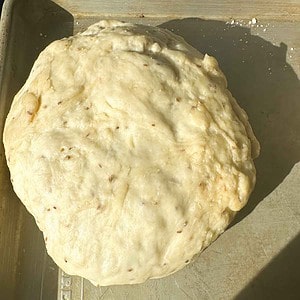
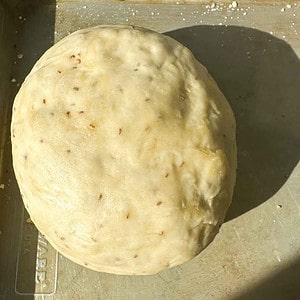

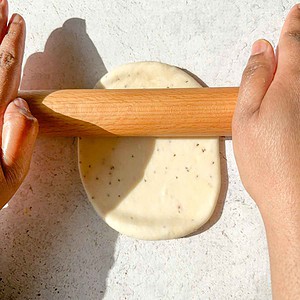
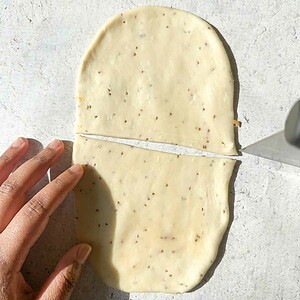
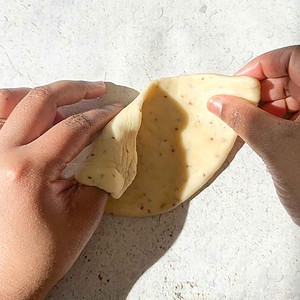
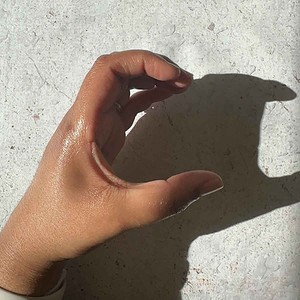

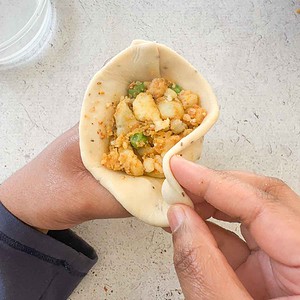
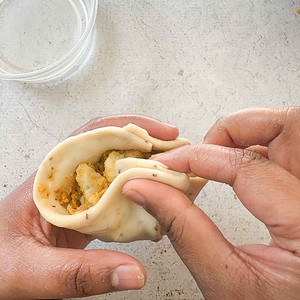
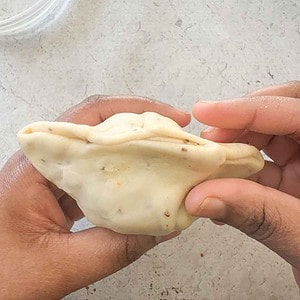
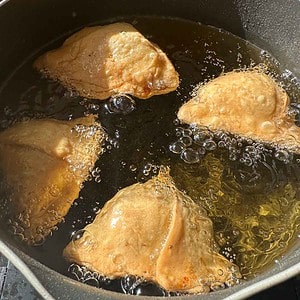
Stephanie says
Thank you for all of the tips on getting a crispy samosa, letting the filling cool down etc. and the detailed instructions and photos on folding. I did bake them and they came out wonderful. Filling recipe if yummy!
I love that you explain the function and how things work in your recipes, even though I have so far used my own recipes as far as ingredients go, I love using your website for the tips and how to. You are so thorough! And a very good teacher! Thank you!
Shri Repp says
Thank you so much for taking the time to write such a thoughtful response. I'm so glad that the tips and the folding techniques were helpful to you 🙂